Unmatched Capability, Real-World Accuracy
ASAP
ASAP (Advanced Systems Analysis Program) optical simulation software is designed to perform high-speed, accurate simulations of optical systems – both complex and simple. It is regarded in both research and industry for tasks such as ray tracing, stray light analysis, and beam propagation.
Powered by the kernel – ASAP’s non-sequential raytracing engine – ASAP simulations allow for the study of even intricate phenomena like scattering, diffraction, and ghost reflections. ASAP is unmatched designing, analyzing and optimizing optical systems; it provides users the confidence to validate designs before building experimental and costly prototypes.
Efficiency, Reproducibility, Customization
Long regarded for its built-in scripting language, ASAP Script functions and commands are tailored for optical system modeling, which include defining optical elements, setting up ray tracing parameters, and performing analysis on simulation outputs. However, its syntax is straightforward, which makes it accessible for users of all skill levels.
The appeal of Scripts is found in its efficiency, reproducibility and customization. Scripts allow users to create and save custom scripts which can be used to automate repetitive workflows. By automating simulation and analysis tasks, users can perform extensive parametric studies or optimization routines with greater efficiency.
Plus, Scripts provide and maintain a clear record of simulation setups and processing steps. This is incredibly useful for reproducing results and sharing workflows with colleagues.
Coupled with ASAP’s powerful Optics Manager, Scripts make it easier for users to explore a wide design space or automate complex simulation sequences. Even novice users can create or modify existing scripts (ASAP comes with over 800 script examples) and tap into the full power of ASAP.
Familiar Structure, Enhanced Interface
FEATURES
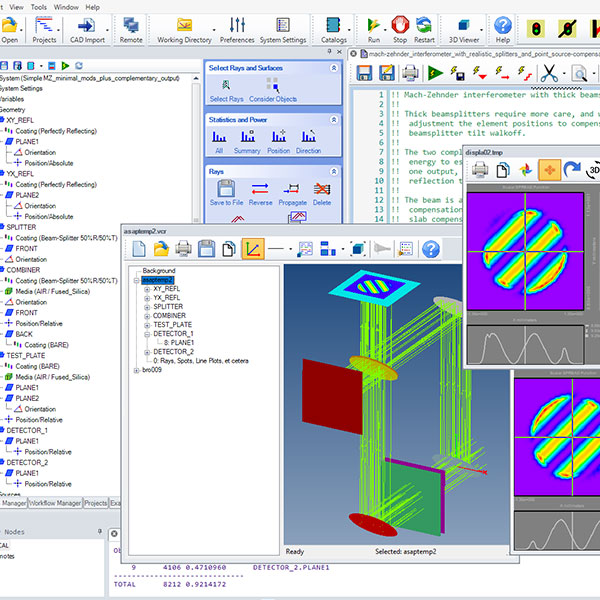
OPTICS MANAGER
Optics Manager is an easy-to use interface with a familiar CAD-like tree structure. No scripting is needed. Instead, the Optics Manager allows users to:
- Create optical surface and geometric entities
- Define new system parameters
- Import CAD geometry
- Add optical properties
- Add a light source
- Setup ray tracing and analysis options
The Optics Manager includes ASAP catalogs for Media, Coatings, Scatter Models, Sources, and Lens. The as-defined system can run with a single click. And all components, ray traces and analyses can be saved for later post processing.
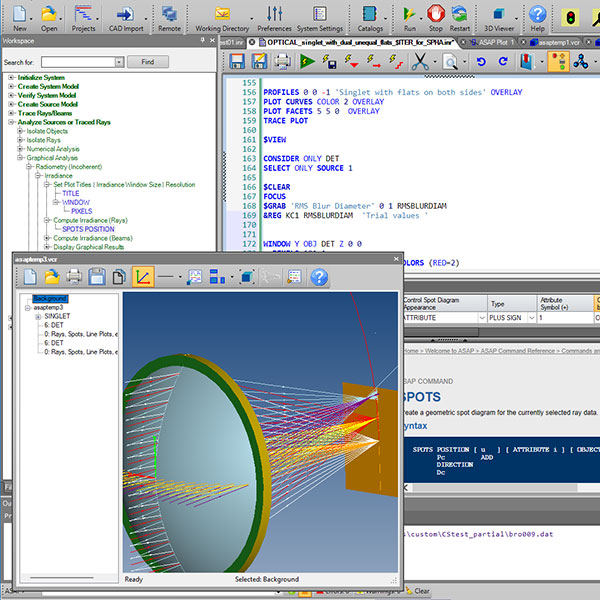
WORKFLOW MANAGER
The Workflow Manager provides quick and easy access to command menus for assisted ASAP scripting. This feature is helpful for those users less comfortable with but still need to access the power of scripting in ASAP. Commands are found using the available search box or within the Workflow Manager tree.
The Workflow Manager tree is organized around the standard 4-step simulation process in ASAP: geometry, sources, ray tracing, and analysis. Each menu is clearly labeled to show the exact information needed to construct the command. The command is then automatically inserted at the cursor location of the current active script.
ASAP ADDITIONAL FEATURES
This feature is integrated directly into the Script Editor. The Optimization Manager automatically parses INR script to find defined variables for use as Design Variables, Constraints, or Merit Functions. Optimization conditions and visual output at run-time are visible within the INR script window.
This feature automatically parses ASAP Scripts to find macro code which is presented as a list. One-click access to the list allows direct editing of each macro and changes are automatically updated to the Script Editor.
ASAP will automatically run parallel processes on all cores on a local PC as well as all cores on up to 5 Remote licenses of ASAP installed on the LAN. Plus, users can control the number of cores accessed on each machine. The combination of parallel and remote distributed processing increases ASAP’s ray trace speed, power and efficiency.
Import IGES and STEP files; Geometry using XML file format. Import measured manufacturer’s source date in distribution file (.dis) format. Import photometric data in EULUMDAT and IES LM-63-02 formats. Import lenses from CODE V, OSLO, and ZEMAX.
ASAP’s 3D Viewer automatically updates when any new surface, optical component or imported CAD geometry is added to the ASAP Optics Manager. Users can immediately see and verify the position and orientation of their systems. Plus, the 3D Viewer contains several features including: part transparency, optional recoloring of surfaces or components, optional changes to background colors and lighting, and easy printing or saving of the 3D view to a variety of industry standard formats.
A number of ASAP’s Commands now have increased functionality, including: COATING TABLE Command, CPC EDGE Command, EXTREMES Command, INTERPOLATE Command, and PATHS Command.
Once systems are constructed in the Optics Manager, ASAP automatically creates a working script from the complete system prescription. Users can immediately modify and run these scripts to add multi-variable analysis or optimization using the Optimization Manager to their design tasks.
The new extensible Script Editor has an improved user interface and provides more control over script syntax, appearance, and keyboard shortcuts. Plus it now has one-click access to the Optimization, Macro Managers, and $SCR Editor.
The $SCR Editor acts as a simple, two-way forms editor with one-click access to text, integer, and floating point input. Editor automatically generates corresponding ASAP script and updates to script are automatically seen in the $SCR form.
Create and save your own customized workspace.
ASAP users automatically have access to thousands of light sources for direct importation into their optical systems.
Users enjoy access to over 800 ASAP examples, complete with INR files.
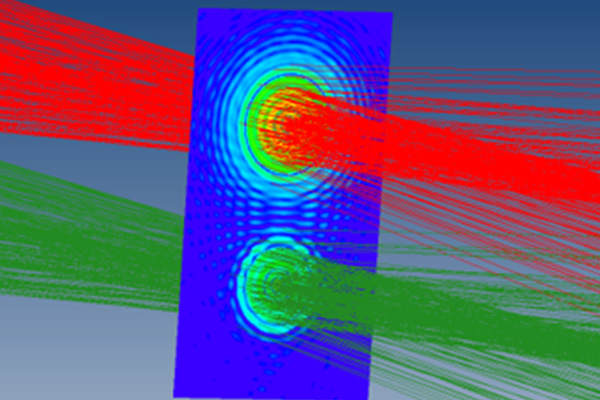
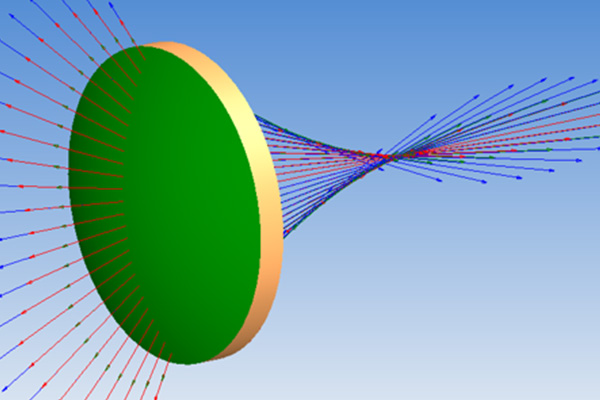
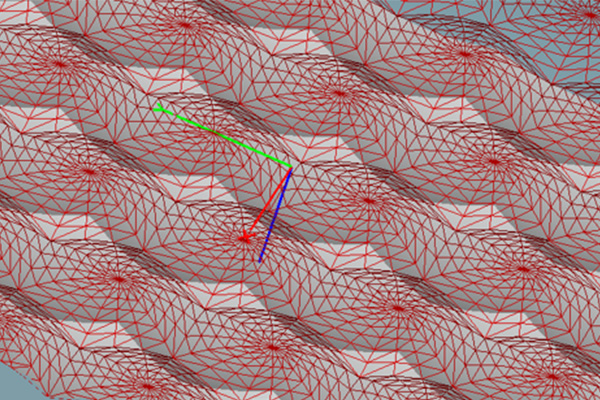
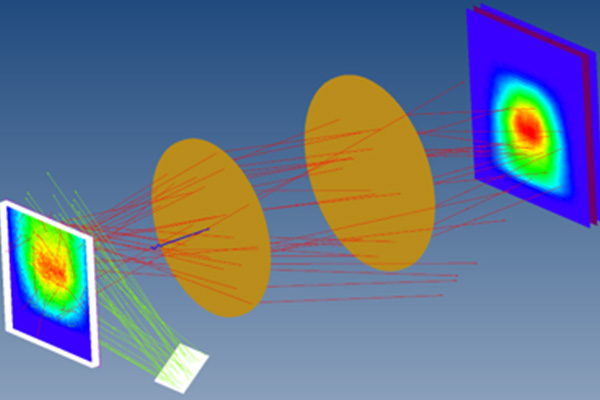
Flexible Toolset
Applications
ASAP models complex imaging and illumination systems, luminaries, light pipes, bio-optic systems, medical devices, light concentrating devices, displays, coherent systems, and more.
It creates highly accurate source models using source images, point sources, ray grids, and ray fans. Users can model LEDs, incandescent, HID arc lamps, CCFLs. Users can also import from the BRO Light Source Library. Common applications include, but are not limited to:
- Stray Light Analysis
- Wave Optics Analysis
- Gaussian Beam Decomposition
- Polarization on Ray Tracing
- Automotive Lighting Design
- Imaging System Design
- Optical System Optimization
- Polarization Modeling
- CIE / Chromaticity Analysis
- Human Eye Simulation
ASAP is a highly flexible toolset that, by its very design, can handle complex challenges. Longtime users of the program, often discover new ways of using ASAP to inform the solutions for today.
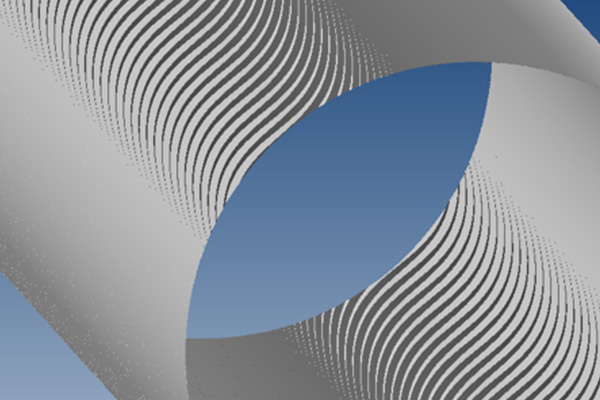

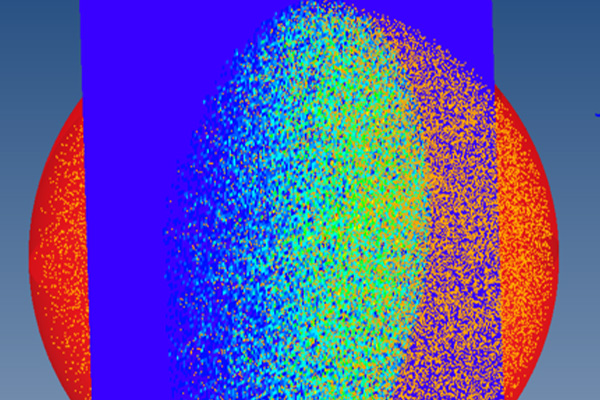
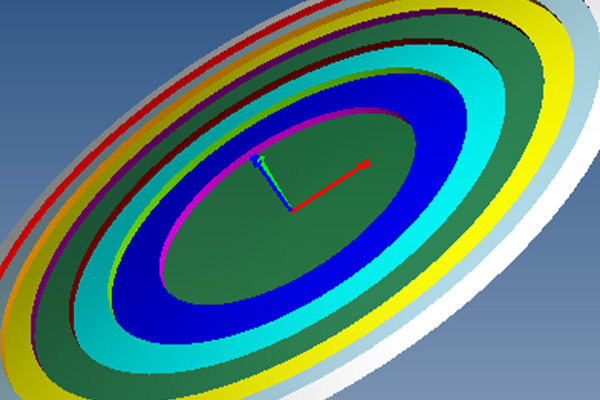
Application Specific Add-Ons
ASAP Modules

ELTM
Exterior Lighting Test Module (ELTM) is a separate application designed to work in conjunction with ASAP or as a stand-alone. It provides SAE, ECE and FMVSS testing.

CATIA
This module opens native CATIA V5 from within ASAP and without the need for a separate, concurrent CATIA installation. It currently supports release versions r13-23.

BIO Toolkit
BIO Toolkit includes the Advanced Human Eye Model (AHEM) and the Realistic Skin Model (RSM). It models light propagation and scattering in biological systems.
ASAP faq
ASAP will model the finest details of optical systems. This means ASAP users can depend on their simulations to mirror real-world performance. ASAP analyses validate designs and support smooth transitions to manufacturing. Optical system designers worldwide rely on ASAP for virtual prototyping.
With a reasonable time investment, ASAP features are accessible to anyone in need of optical modeling software to support product development. ASAP offers a comprehensive set of modeling features capable of modeling more optical phenomena in a single package than any other software application available. These features make up a sophisticated, powerful toolkit for optical-system designers in search of design-validating results. ASAP features are intuitive to learn and apply.
BRO offers a suite of Optics Training Courses — online, on-demand and in-person — to enable ASAP users to efficiently and accurately solve their optical challenges. Visit the Training tab to learn more and find a calendar of upcoming classes.
ASAP scripting is one of many ways to enter system geometry into the application. Since ASAP is often used in concert with sequential ray-tracing tools, certain configurations of ASAP include integrated translators for popular lens-design applications. CAD users are able to open native CAA V5 CATIA files from within ASAP, write ASAP-specific GTX files from within SolidWorks, and import IGES, DXF, and XML files from any CAD application.
ASAP script language creates surfaces that are optimized for ray tracing. This is a key difference between ASAP and other optical software packages powered by solid-modeling engines or coupled directly to CAD programs. These packages often produce geometry elements that are not optimized for ray tracing engines. Investing the time to model key geometry components within ASAP also makes the full functionality of ASAP script accessible, including the ability to automate analyses of multiple design iterations using system parameterization.
ASAP scripting is much more than a way to enter system geometry into the application. It is a tool to ask precise questions about the way light behaves in optical systems. With minimal keystrokes, ASAP users can analyze light propagation in steps, filter out important subsets of rays being traced through a system model, and interrogate the paths of individual rays or subsets of rays. ASAP scripting is also a powerful tool to build parameterization, iteration, macro language, and branching into system models. ASAP script users are able to vary key parameters and then optimize systems around these parameters. They can build “IF”, “THEN” and “ELSE” statements into models and even write their own menu-driven programs with user-defined macros.
All ASAP configurations include integrated scripting support for Python, VBScript, JScript, and C-Sharp. The full functionality of the ASAP script language can be accessed from these alternate programming languages. No other optical software application offers such a comprehensive list of scripting options.
ASAP is in continuous development by an expanding team dedicated solely to enhancing ASAP. The ASAP development team continues to work on kernel enhancements, CAD interoperability, user-interface features, and product styling. ASAP development efforts are supported by a full-time quality control engineer, and a team of technical support engineers — most with PhDs in Optical Science. All ASAP development efforts follow the “best practices” outlined within the SEI CMMI Capability Maturity Model.
BRO continues to offer ASAP Perpetual Licenses and an accompanying Software Support “Maintenance” Plan. Perpetual licenses are reasonably priced. You can contact: sales@breault.com for more details.
Learn More About ASAP
ASAP Trial Request


trial request, pricing & more
Interested in ASAP? Simply fill out and submit the form. A helpful team member will respond within 48-hours*.
BRO is pleased to provide a full version of ASAP for your evaluation. The trial also includes tutorial videos, access to Technical Support, example files, and more.
*Check your spam folder if you do not receive a response.
Our Team is Ready to Help!
COntact bro
